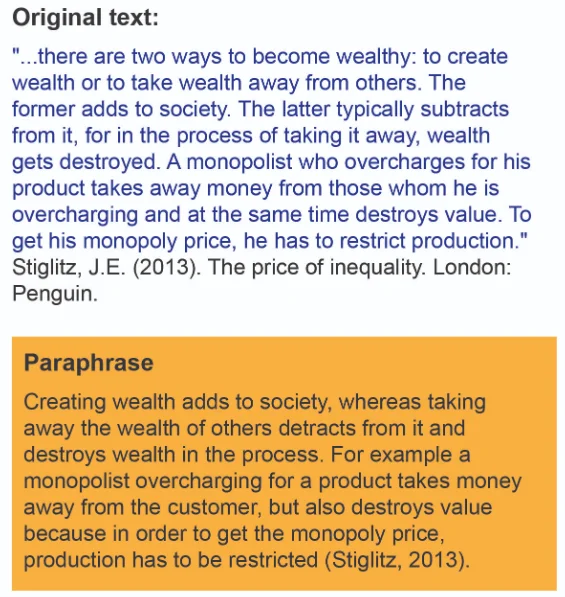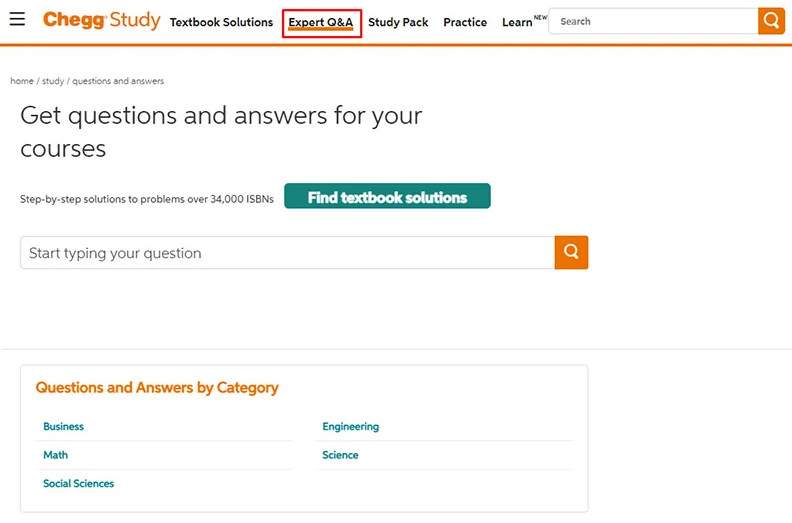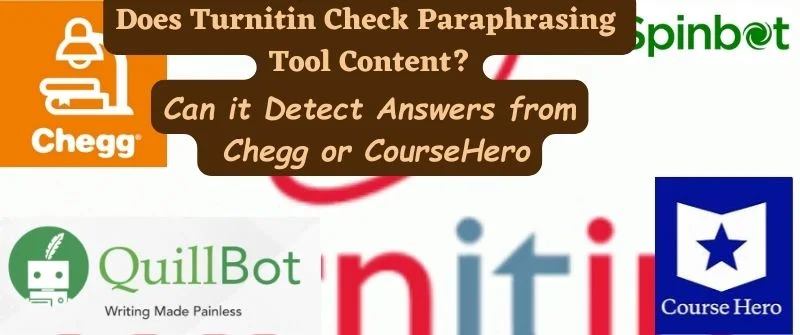As a student, using homework and paraphrasing services can be tempting, but they can also lead to academic dishonesty. Remember, Turnitin checks spin bots, Chegg and Course Hero answers.
Although Turnitin is not perfect, it thoroughly checks your work against a massive database of academic papers and web pages.
Can Turnitin Detect Paraphrasing Tools?

Turnitin is a commonly used plagiarism detection tool that compares the submitted documents against a large database of academic content such as journals, academic articles, website content, and previously submitted documents from students.
To compare, it looks for textual similarities between the submitted document and existing sources to find potential matches. This means Turnitin is mostly effective when detecting verbatim (word-for-word) plagiarism.
Turnitin’s effectiveness in detecting paraphrased content or text that has been generated by paraphrasing tools is limited. However, this limitation is partially overcome by the tool’s ability to identify matches in terms of context, syntax, and structure.
Thus, Turnitin may detect paraphrasing tools even when they have reworded the original text by looking for similarities in context, syntax, and structure.
Can Turnitin Detect Spinbot?
Spinbot is an online tool that rephrases sentences to come up with alternative versions of the original text. It heavily re-words or paraphrases the original text to create alternate versions.
As noted, Turnitin, though meant to detect verbatim plagiarism, is also capable of detecting paraphrasing through syntax, structure, and context. Therefore, even though Spinbot will rephrase and paraphrase the original text, the context and the original meaning will be retained. As such, Turnitin may detect that the paraphrased work has been completed by a paraphrasing tool. It will not specify that Spinbot has been used, though. It will just notice the use of paraphrasing tools.
Can Turnitin Detect Quillbot?
Quillbot is also an online paraphrasing tool that rewrites or rephrases sentences to generate other versions of the original text. Just like in Spinbot, Turnitin does not specifically detect the use of Quillbot as the tool that has been used to unethically paraphrase the original text.
Turnitin will only compare the submitted document that has been paraphrased through Quillbot against the documents within its database and look for instances where the structure, context, and syntax are similar.
It is very difficult for Turnitin to specify the type of paraphrasing tool that has been used to commit plagiarism because such tools use similar rephrasing and rewording techniques to create an alternative version of the original document.
Can Turnitin Check Images?
The answer to this question is no. Turnitin does not directly analyze or check images. This is because the tool is primarily designed to evaluate and compare textual content.
Turnitin only compares the submitted document’s text against the text of other documents that are available within its database. As such, the tool cannot recognize images or compare visual content.
Does Turnitin Check Chegg?

Turnitin does not directly check Chegg when comparing for similarities or matches between the submitted document and the existing sources within its database.
Chegg can be regarded as an online platform where students can find study material, get homework help, and get tutored in various topics or disciplines.
It is worth noting that Chegg is a subscription-only platform that safeguards its online users’ privacy by not sharing their private data or information. Because of this, Turnitin cannot access the materials or documents that have been written by tutors for students.
The content within Chegg is kept private for their users only. However, if answers that have been written by Chegg’s tutors for students during homework help have been shared within the public domain, Turnitin can flag them. Though this is the case, Turnitin is not able to check Chegg when conducting plagiarism scans.
Does Turnitin Check Course Hero?
Course Hero can also be regarded as an online educational platform that offers study resources such as textbook solutions, study guides, and lecture notes to help students enhance their learning.
Course Hero also uses a subscription-based model that only allows students with active accounts to access the educational material. What this means is that Couse Hero upholds the privacy and security of user information by only allowing subscribed users to access material that is only meant for them.
As such, Couse Hero does not share any information or material with third parties that could potentially jeopardize user information, who in most cases are students.
Therefore, this educational platform cannot allow Turnitin to check its study resources because it can put its clients at risk of facing educational consequences.
Can Professors See if you Use Chegg or Course Hero?

The answer to this question is yes and no.
From the aforementioned, both Chegg and Course Hero are subscription-based platforms that protect user information.
Since the two platforms are very popular among students because they provide homework assistance, professors may not be pleased if they know their students are using unauthorized means to complete their assignments.
This is why the two platforms protect user information and avoid sharing any study resources or academic essays/papers with plagiarism detection tools such as Turnitin.
Therefore, if your professor relies on plagiarism detection tools like Turnitin to see if you use Chegg or Couse Hero, they will not be successful.
However, if your professor is subscribed to either of the platforms and compares your answers or essay to the responses given by the platforms, they may know whether you use them or not.
How Turnitin Checks Plagiarized Content
Turnitin utilizes a sophisticated algorithm to check for possible plagiarism within the submitted document by comparing it with existing sources within its database. Thus, once the document is submitted via Turnitin, it is indexed and stored in its database.
The document, which can be in various formats such as Microsoft Word documents, plain text, or PDFs, is then compared against other sources within Turnitin’s database. Turnitin uses its algorithm to conduct a similarity check, breaking the document into small parts like sentences and comparing them with the database for similarities. After the similarity check, an Originality Report is generated.
It highlights instances of similarities and gives a percentage similarity score. Students or instructors may interpret the Originality Report to determine whether plagiarism has been committed. To sum it up, though there are various ways in which students can receive academic assistance from online platforms, it is important to uphold academic ethics and integrity.
